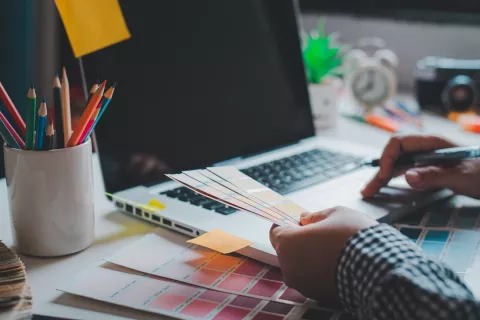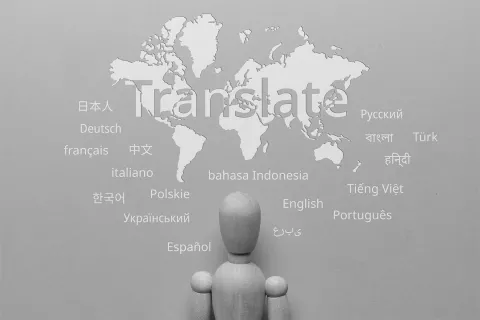In today’s globalized world, cultural and linguistic diversity has become increasingly important, particularly in the healthcare industry. When it comes to medical devices, artwork and visual communication play a crucial role in effectively conveying information to users. However, cultural and linguistic variations can significantly impact the understanding, acceptance, and safe use of medical devices. This blog explores the profound influence of cultural and linguistic disparities on medical device artwork; it also emphasizes the importance of addressing such differences to ensure patient safety and optimal healthcare outcomes.
The Significance of Medical Device Artwork
- Visual Communication in Medical Devices: Medical devices often rely on visual cues and artwork to communicate critical information to users, healthcare professionals, and patients. Visual elements such as text, icons, symbols, colors, and diagrams are used to convey instructions, warnings, and precautions. This type of communication enhances user comprehension, especially for individuals with limited literacy or linguistic proficiency, ensuring proper device use and patient safety.
- Role of Cultural and Linguistic Factors: Cultural and linguistic factors significantly influence how individuals interpret visual information. Cultural backgrounds shape people’s perceptions of colors, symbols, and visual aesthetics. Linguistic disparities, such as variations in language structure or idiomatic expressions, impact not only comprehension, but also the accurate translation of medical device content. Thus, the artwork needs to be culturally appropriate and easily comprehensible to users from different linguistic backgrounds.
Cultural Differences and Medical Device Artwork
- Cultural Perception of Colors and Symbols: Colors and symbols carry cultural meanings and associations that can vary across cultures. For example, while red symbolizes good luck in some cultures, it may signify danger or warning in others. Understanding such subtle cultural nuances is crucial in designing medical device artwork that resonates with users and prevents misinterpretation.
- Aesthetics and Cultural Preferences: Design aesthetics can vary across cultures. What is considered visually appealing or acceptable in one culture might not be so in another. Different cultures have unique designing styles, color preferences, and artistic traditions. Adapting artwork to align with cultural preferences ensures that medical devices are visually appealing and culturally appropriate, which in turn make them more acceptable to users.
Linguistic Differences and Medical Device Artwork
- Language Localization and Translation: Accurate translation of medical device content is essential for user comprehension and safety. However, challenges in translation can arise due to linguistic differences, idiomatic expressions, or the absence of direct equivalents for certain terms. Labels, instructions, and text-based information should be translated accurately and localized appropriately to suit the target language. Localization, which goes beyond translation to include cultural nuances and regional relevance, plays a vital role in ensuring effective communication.
- Pictograms and Icon Designs: Some visual symbols are intended to convey universal meaning. However, linguistic variations can influence the interpretation of these symbols. Many Regulatory bodies such as the International Organization for Standardization (ISO) provide guidelines for the use of pictograms and icons in medical devices. For example, a simple arrow may indicate different directions, depending on the specific linguistic context. Thus, you must factor in linguistic disparities even when designing symbols that are universally understood and culturally appropriate.
Addressing Cultural and Linguistic Differences:
- User-centered Design Approach: This kind of an approach involves understanding the cultural backgrounds, preferences, visual impairments, linguistic proficiencies, and specific needs of the target users. Conducting cultural research, user studies, and gathering feedback from diverse populations during the designing process helps create inclusive medical device artwork that resonate with users from various cultural and linguistic backgrounds. Seek input from users, healthcare professionals, and other stakeholders at different stages of the designing process to validate and improve your artwork.
- Collaboration with Localization Experts: Collaborating with linguistic and cultural experts such as translators, localization specialists, or native speakers is key to ensuring accurate translations and adapting artwork to align with regional preferences. These experts possess the necessary linguistic proficiency and cultural knowledge to bridge the gap between languages and cultures, thereby improving the efficacy of medical device communication.
To sum up, by acknowledging and addressing cultural and linguistic differences in medical device artwork, manufacturers can ensure optimal user comprehension, reduce risks, and enhance patient safety. Embracing a user-centered design approach, collaborating with localization experts, and adhering to Regulatory guidelines are the key steps in creating inclusive and culturally appropriate medical device artwork. Such efforts will contribute to better healthcare outcomes for diverse populations worldwide.
To find out more about medical device artwork requirements, reach out to a Regulatory expert like Freyr today. Stay informed! Stay compliant!





